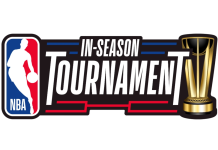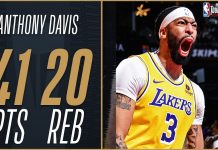The NBA, a league synonymous with high-flying dunks, buzzer-beaters, and the relentless pursuit of a championship, added a new twist to its narrative with the introduction of the In-Season Tournament.
As the dust settles from the inaugural round, basketball enthusiasts find themselves pondering a question that hovered over the tournament’s conception – did many teams take it seriously? Let’s embark on a courtside analysis, donning our virtual jerseys and lacing up our metaphorical sneakers.
The Tournament’s Premise: A Dash of Excitement Mid-Season
The NBA In-Season Tournament, introduced in the 2023-2024 season, injects a dose of unpredictability into the regular season grind. The premise is simple – a mid-season showdown where teams vie for not only bragging rights but also additional incentives, including a monetary prize for both players and coaching staff.
The tournament is structured to feature the 14 teams that currently fall outside playoff positions, providing them with an opportunity to make a splash and potentially alter the course of their season. The idea is to break the monotony of the regular season, create compelling storylines, and engage fans in a new and exciting way.
Teams’ Approach: Balancing Act or Casual Stroll?
Now, the real question echoes across basketball forums and sports bars – did teams approach the In-Season Tournament with the same intensity as a playoff game, or was it more of a casual exhibition? The answer, like a well-executed pick-and-roll, involves a bit of strategy and a dash of unpredictability.
1. Playoff Contenders vs. Rebuilding Squads: Divergent Paths
For teams comfortably situated in the playoff picture, the In-Season Tournament presents a delicate balancing act. On one hand, there’s the allure of adding another trophy to the cabinet and bolstering team morale. On the other hand, there’s the cautious consideration of not overextending key players and risking fatigue or injuries in a competition that doesn’t directly impact playoff seeding.
For the rebuilding squads languishing in the lower echelons of the standings, the tournament serves as a golden opportunity to instil a winning culture and galvanise a young roster. These teams, often hungry for any taste of success, might approach the tournament with a more earnest desire to compete.
2. Coaches’ Perspectives: Strategizing for Success
Coaches, the online blackjack masters of the basketball world, face the challenge of strategizing for success in the tournament while maintaining a long-term perspective on the regular season. Some may opt to rest key players, giving younger talent a chance to shine and preserving the stamina of stars for the gruelling playoff push.
Others may see the tournament as a chance to fine-tune their rotations, experiment with different lineups, and build chemistry among players who might not share the floor frequently during regular games. The coaching approach, much like a well-drawn-up play, varies from team to team, adding an element of intrigue to each matchup.
3. Players’ Mindset: Championship Hunger or Business as Usual?
The heart and soul of the game, the players, bring their own mindset to the In-Season Tournament. For veterans with championship rings gleaming in their trophy cases, the tournament might represent an opportunity to add another accolade to their storied careers. For emerging stars and rookies, it’s a chance to prove their mettle on a bigger stage and etch their names into NBA lore.
However, the grind of an 82-game season demands a strategic approach to managing player minutes and energy levels. Some players may embrace the tournament with the same fervour as a playoff series, while others might view it as a chance to catch a breather before the intensity ramps up in the latter stages of the regular season.
Fan Engagement: Cheers, Jeers, and the Social Media Frenzy
As the tournament unfolded, the virtual and in-arena cheers mingled with the occasional jeers, creating a symphony of fan engagement. Social media platforms, the modern arenas of fandom, buzzed with reactions, memes, and heated debates. Fans, the lifeblood of the NBA, embraced the tournament with a mix of enthusiasm, scepticism, and a hunger for basketball drama.
The tournament’s success, from a fan engagement standpoint, rests not only on the level of competition but also on the narratives that emerge. The stories of underdogs toppling giants, buzzer-beating shots, and unexpected rivalries fuel the chatter across basketball communities, turning even the sceptics into avid spectators.
Conclusion
As the NBA In-Season Tournament concludes its debut round, the league finds itself at a crossroads – an opportunity to refine and evolve the tournament based on the lessons learned and the feedback gathered. The balance between preserving the integrity of the regular season and infusing a fresh, exciting element into the NBA calendar remains delicate.
So, as we bid adieu to the first round of the In-Season Tournament, we await the next chapter of this basketball experiment. Will it grow into a revered tradition, akin to the NBA Playoffs, or will it remain a curious footnote in the league’s history? Only time will tell, but for now, let’s relish the highlights, the debates, and the unscripted drama that the tournament injected into our basketball calendars.


















